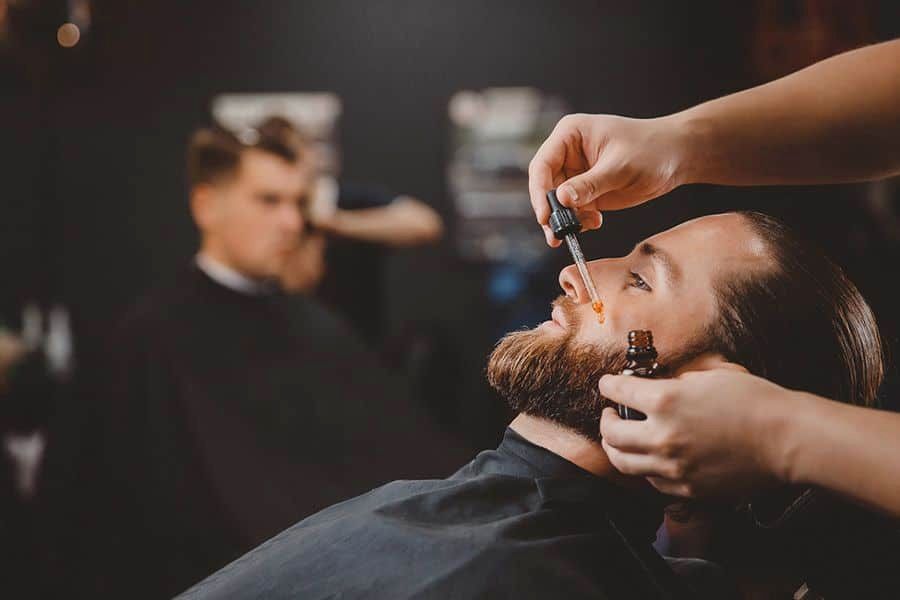Tattoo aftercare requires some commitment to make the design last. Get all bits and pieces of tattoo care from professionals in our guide. Does tattoo aftercare raise a lot of questions for you? Don’t worry. We have all of them answered in our detailed guide. We’ve provided you with the instructions to your daily tattoo care, the products you need to use and measures to retain the best quality of the design for a long time to come.
Which Beard Oil Is The Best? Find The Answer Here
Beard oil products offer a wide choice today thanks to the unfading trend on the facial hair growth. With the wide range of oils on the market, it can sometimes be challenging to find the one. Our full guidance on the best beard oils will not only help you decide on the product of your choice but also tell you what to do with it.
Hair Wax For Men: Best Products To Keep Your Favorite Style In Place
A hair wax is highly popular with both hair stylists and guys who opt for looking well-groomed. It has much more benefits than any other hair styling product, which you’ll find in our insightful guide. You will also learn how to choose and apply wax as well as get the rundown of the best products available.
How To Choose The Best Shaving Soap For An Effective Shave
Picking the best shaving soap may be a hard task, but not for you anymore. Follow our guide that’ll tell you how to make the right choice! Sometimes, choosing the best shaving soap can be a really daunting task. However, when you know what you’re looking for, it narrows down to simply picking the product that meets your personal preferences. We’ve shared some knowledge on the subject so that you will know what to expect from shaving soaps available on the market and how to choose the one.
50 Best Tattoos For Men: Inspiring Ink Ideas
If you’re searching for tattoos for men, you’re likely to get a little lost in the world of body art. From tribal to portrait, to Polka trash or new school, tattoo ideas are endless. Whether you’re planning your first tattoo or your tenth, this guide will help you find a tattoo style that fits your body for a lifetime.
Top 10 Best Beard Trimmer Picks For Men
Choosing a beard trimmer can become a really challenging task if you don’t know what to look for. However, when armed with the necessary information, you’ll get the best result without making much effort. Thus, for your convenience, we’ve selected the best trimmers and reviewed them for you. Don’t hesitate to choose the best trimmer for your beard.
29 Spine-Chilling Halloween Makeup Ideas for Men
Halloween makeup is not for girls only. Moreover, your costume will not look complete without it. Whether scary of funny, there is a wide range of ideas to choose from. See for yourself in our guide.
The Fuckboy Haircut: 23 Ideas For A Bad Guys
F*ckboy haircut ideas are many but you need the best ones to look your absolute best on a daily basis. Luckily, we know everything about this style and we are ready to share. Dive in!
Top 55 Non-Boring Halloween Costume Ideas For Men
Halloween costume ideas for the best outfits for men reside here. Check out our collection and pick your most startling look for the party. Those who are looking for the best Halloween costume ideas can stop their search here. We have collected the coolest outfits for Halloween no matter whether you want to give a spooky and frightening or cute and funny impression.
35 Easy DIY Halloween Costume Ideas for Boys
Boys Halloween costumes range from simple and fun to elaborate and scary. Yet, all of them can be homemade. If you are seeking ideas, then look no further. Below, we have collected the coolest Halloween costumes for boys of any age.
Zac Efron Haircut: Variety Of Textured Hair Styles From Today To 2006
Zac Efron haircut styles are a generous source of inspiration for your next hair look. You can find the style that will perfectly complement your face shape and make the most out of your hair texture. On top of that, Efron’s haircut range includes a style to match every taste and occasion. Don’t hesitate to let your hair look the best it can.
30 Hottest Women Shaping Today’s World
These women are hot. They’re sexy. They are beautiful and strong. We’ve rounded up the list of the hottest women that have graced our planet this year.
Face Shapes Guide For Men: How To Determine Yours
Face shapes men are a decisive factor when it comes to your hair, beard, and even sunglasses style. Check out our guide for ways to determine your face shape as well as the best styling ideas for every type.
Earrings For Men Today: Hoops, Dangles, Dimonds And More
Earrings for men have become a popular fashion item nowadays. If you want to learn to wear them, head over to our guide, which contains a bunch of tips on how men can pull off this accessory.
Valentine’s Day Gifts For Her To Make This Day Unforgettable
Maybe, putting off shopping for Valentine’s Day gifts wasn’t that good idea, huh? Anyway, now’s not the time to kick yourself, as your girl will do it later herself if you don’t take your last chance to make things right. Here, we’ve put together the best last-minute ideas to match both your and your girl’s preferences.
Boost Your Libido With Our Array Of Literotica Websites
Literotica and other similar sex story websites will not let you get bored with your erotic fantasies. They set off your imagination to greater heights never seen before. Find the rundown on the best erotic sites below.
What Are Male Personality Types And How To Find Mine?
Not sure what male personality types there are and what is yours? No worries. We got your back. Below, we have broken down all the types of male personality and explained the differences between them.
How To Tie A Tie Like A Pro And Flaunt A New Knot Style Every Day
How to Tie a Tie? Would you like some suggestions from us? There are so many beautiful options of ties for men that you can easily get lost. We have prepared a full guide that will help you make the right choice to add a cute and nice item to your necktie collection.
Who Is A Sigma Male And How Do You Become One?
Who is a sigma male, and how do you recognize one from the crowd? What is more – maybe you are a sigma without even realizing it? It is time to have all these questions answered in detail!
Amazing Birthday Gifts For Her To Make The Day Memorable
Are you looking for amazing birthday gifts for her that will take your love`s breath away? Then you have found the right place for inspiration. Your girlfriend deserves the best birthday gifts for her, doesn`t she? We will be so happy to help you with making a choice. We promise you that no matter what you choose from our list, the choice will be perfect. Let`s look through our suggestions to amaze your girl.


























